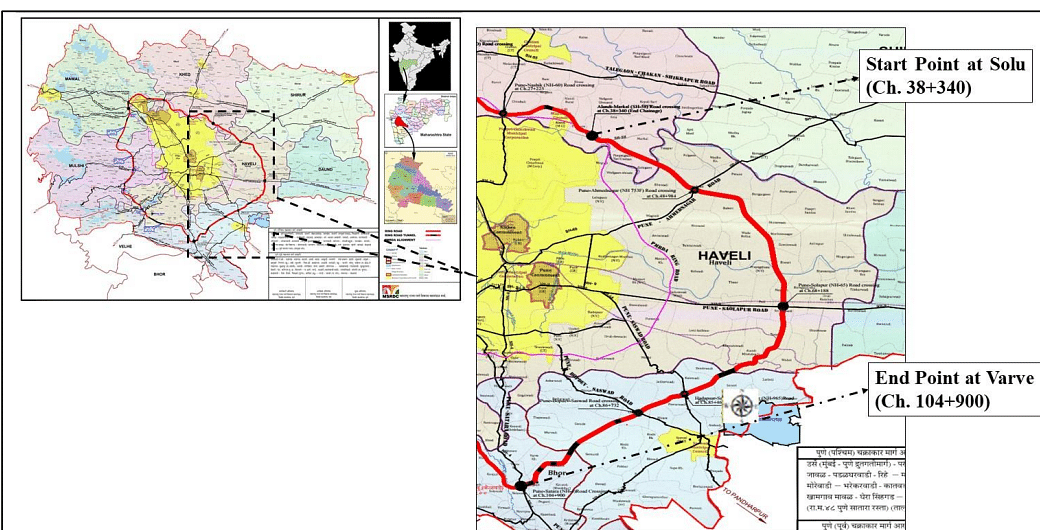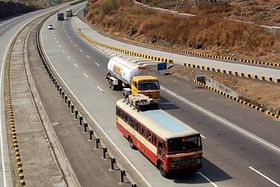The project has an estimated cost of Rs 15,857 crore and is proposed to be taken up in nine packages.
The senior officials of the chief minister’s infrastructure war room have directed the district administration to complete land acquisition for the Pune ring road project by September-end.
The proposed 136.80-km-long Outer Ring Road in Pune would enable vehicles from different parts of the state to pass through the city without entering its arterial roads.
The Maharashtra State Road Development Corporation (MSRDC) has taken up the project as a priority, as it is one of the significant infrastructure works in the region.
Vice-Chairman MSRDC, Radheshyam Mopalwar, confirmed that the pre-qualification for contractors to execute the work will be floated soon.
The six-lane express highway is expected to be completed by May 2026.
The land acquisition work is being carried out by the administration, and the compensation amount has to be declared for all 81 villages.
Mopalwar expects the land acquisition work to be completed on time as the state government has assured adequate funds to speed up the process, reports Times Of India.
The officials claim that the project would be completed in 30 months providing citizens with unobstructed traffic on the region’s arterial roads.
Alignment
The Pune Ring Road will have a greenfield alignment and will have two parts.
The first part will be the 74.08 km stretch from Urse on Yashwantrao Chavan Expressway to Shivare on Pune-Satara NH-4, which will be known as the Eastern Ring Road (PRR-EAST).

The other part will be the 65.45-km-long road from Shivare, back to Urse in Pune District and will be known as the Western Ring Road (PRR-WEST).
The access-controlled Pune Ring Road which lies entirely in Pune district will pass through 83 villages.
Salient Features
While the width of the road will be between 90 to 110 metres with three lanes on either side for 97.80 km, there will be four lanes each on either side on the 39 km stretch of Ring Road.
The proposed ring road is expected to relieve traffic congestion in Pune and Pimpri-Chinchwad.
The road will be designed for a speed of 120 kmph and will have Intelligent Traffic Management System (ITMS) along with noise barriers on the stretch passing through urban areas.
There will be wayside amenities at five locations. It will have 14 interchanges, eight pedestrian underpasses, six smaller vehicular underpasses, 13 light vehicle underpasses, 37 vehicular underpasses, 28 vehicular overpasses, three railway overbridges, 16 major bridges, 38 minor bridges, 230 culverts, 10 tunnels, and 18 flyovers on the Ring Road.
Cost And Construction
The project has an estimated cost of Rs 15,857 crore and will have a completion period of 30 months from the actual start of work, which is likely by this year’s end. The construction of Ring Road is proposed to be taken up in nine packages.
In addition, the state government has already allocated Rs 11,000 crore for the acquisition of land for the Ring Road project.
Significance of Pune Ring Road
Pune District is the second largest district in the state of Maharashtra. The city is at the junction of three major highways, namely, Mumbai-Bangalore, Mumbai-Hyderabad-Vijayawada, and Pune-Nashik, while the new national highways — Pune-Pandharpur, Pune-Aurangabad, and Pune-Mangaon also pass through the city.
As a result, heavy outbound traffic passes through the city each day creating traffic congestions.
Such passing traffic, if diverted through road network outside the city limits will ease the traffic congestion within the city. In absence of such peripheral connections, the load of external floating traffic is ever increasing on the intra-city road network.
The MSRDC conceptualized the Ring Road around Pune City to divert the traffic passing through the city, from outside the city towards other cities, without letting them to enter in the Pune City.


